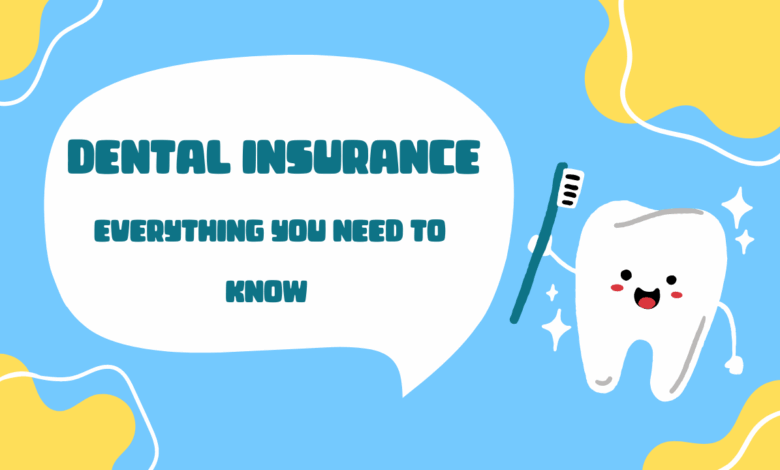Dental Insurance Everything You Need to Know

Introduction to Dental Insurance
What is Dental Insurance?
Dental insurance is a type of health insurance specifically designed to cover dental care expenses. It helps manage the cost of preventive, basic, and major dental services, making it easier for individuals and families to maintain their oral health.
Importance of Dental Insurance
Dental health is crucial for overall well-being. Regular dental visits can prevent serious health issues like gum disease and oral cancer. Dental insurance provides financial support, ensuring access to necessary dental care without overwhelming costs.
Overview of Coverage Options
Dental insurance plans offer varying levels of coverage. Typically, plans cover preventive care, such as cleanings and checkups, more comprehensively, while more extensive procedures like fillings, crowns, and root canals may have partial coverage.
Types of Dental Insurance Plans
Dental Health Maintenance Organization (DHMO)
DHMO plans are network-based and require you to choose a primary dentist. These plans often have lower premiums and no deductibles but limit you to using in-network providers.
Preferred Provider Organization (PPO)
PPO plans offer more flexibility, allowing you to see any dentist, though you’ll save more by using in-network providers. These plans generally have higher premiums and deductibles.
Indemnity Plans
Indemnity plans, also known as fee-for-service plans, provide the most freedom in choosing dentists. They reimburse a percentage of your dental care costs, making them suitable for those who want more control over their care.
Discount Dental Plans
These are not insurance but offer discounts on dental services. Members pay an annual fee to access reduced rates from participating dentists.
Key Features and Benefits
Coverage of Preventive Care
Preventive care, including routine exams, cleanings, and X-rays, is usually covered at 100%. This encourages regular dental visits and helps catch problems early.
Basic and Major Procedures
Basic procedures like fillings and extractions are partially covered, while major procedures such as crowns, bridges, and dentures may have higher out-of-pocket costs.
Orthodontics and Cosmetic Dentistry
Some plans offer coverage for orthodontic treatments like braces, primarily for children. Cosmetic procedures like teeth whitening are generally not covered.
Emergency Dental Care
Many plans cover emergency dental care, ensuring you can receive treatment for unexpected dental issues without significant financial strain.
Choosing the Right Dental Insurance Plan
Assessing Your Dental Needs
Evaluate your dental health and predict future needs. Consider your family history, current dental condition, and potential upcoming procedures.
Comparing Plans and Providers
Research different insurance providers and plans. Compare their coverage, network size, costs, and customer reviews to find the best fit.
Understanding Costs and Benefits
Look beyond premiums. Consider deductibles, co-pays, annual maximums, and out-of-pocket limits to understand the true cost of each plan.
Reading the Fine Print
Pay attention to exclusions, waiting periods, and any pre-existing condition clauses. Understanding these details will prevent surprises later.
How to Maximize Your Dental Insurance
Regular Dental Checkups
Routine checkups and cleanings are often fully covered. Use these benefits to maintain oral health and catch issues early.
Utilizing In-Network Providers
Staying within your plan’s network can save you money. In-network providers have agreed to lower rates with your insurance company.
Understanding Your Policy Limits
Be aware of your plan’s annual maximum, the total amount your insurance will pay in a year. Plan your treatments accordingly.
Managing Out-of-Pocket Costs
Ask for cost estimates before procedures and consider flexible spending accounts (FSAs) or health savings accounts (HSAs) to manage expenses.
Common Misconceptions about Dental Insurance
Coverage Limitations
Not all procedures are covered. Cosmetic dentistry, certain orthodontic treatments, and some specialized services may be excluded.
Waiting Periods
Many plans have waiting periods for non-emergency procedures. This can range from a few months to a year.
Pre-existing Conditions
Some plans exclude coverage for pre-existing dental conditions, though this is less common than in the past.
Annual Maximums
Most plans have an annual maximum limit. Once reached, any additional dental expenses for the year are your responsibility.
Conclusion
Recap of Key Points
Dental insurance helps manage the cost of dental care, offering various plans with different coverage options. Choosing the right plan involves assessing needs, comparing providers, and understanding costs and benefits.
Final Thoughts on Dental Insurance
Staying informed about your dental insurance can lead to better oral health and financial savings. Regular dental care is crucial, and the right insurance plan makes it more accessible.
Encouragement to Stay Informed and Insured
Investing time in understanding and selecting the best dental insurance ensures you and your family receive essential dental care without unnecessary financial burden. Stay proactive about your dental health and insurance coverage.





